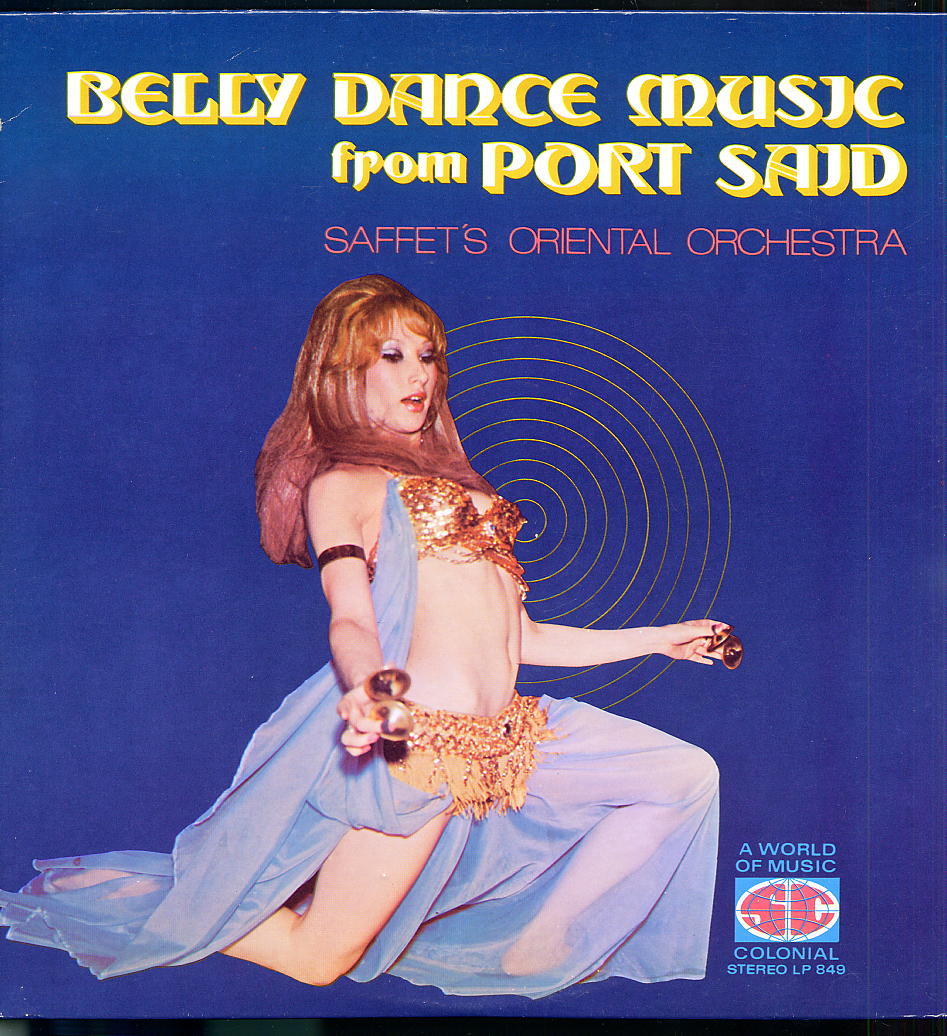 |
Port Said (Bur Sa’id), an Egyptian city lying on the Mediterranean Sea, was originally built in the mid-1800s, so the story goes, to house people hired to costruct the Suez Canal. The Canal runs through Port Said and ends at the Red Sea.
I would imagine that belly dancing became popular in Western culture precisely by Europeans and Americans coming to Egypt to work on the canal. I wonder what the deal is with the concentric circles emanating from the dancer’s left nipple. It could be a GPS transmitter. Ships entering Port Said can use her as a navigation aid. “Belly Dance Music From Port Said” is one of at least 3 albums from Saffet’s Oriental Orchestra. |
 |
Exactly how does one convey the music of belly dancing on an album cover? If you have a beautiful wife, you can photograph her in Egyptian garb and have her do various poses and contortions. Take a bunch of polaroids, and paste it as a mini-montage on a hot pink canvas, then title it using a Arabic-style calligraphy.
Many Westerners who don’t understand Islamic culture (or who understand it only enough to know the tightly-held taboos, especially on women’s mode of dress) have trouble reconciling themselves to this apparent contradiction in their acceptance of belly dancing. But I guess it wouldn’t be a true culture if it didn’t have contradictions. Ray Mirijanian has had at least 6 albums produced in the mid to late 1960s on Middle Eastern music. |
Views: 211
